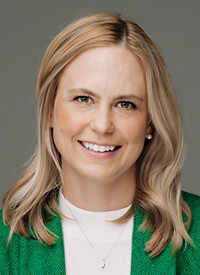Advertisement
Grab your lab coat. Let's get started
Welcome!
Welcome!
Create an account below to get 6 C&EN articles per month, receive newsletters and more - all free.
It seems this is your first time logging in online. Please enter the following information to continue.
As an ACS member you automatically get access to this site. All we need is few more details to create your reading experience.
Not you? Sign in with a different account.
Not you? Sign in with a different account.
ERROR 1
ERROR 1
ERROR 2
ERROR 2
ERROR 2
ERROR 2
ERROR 2
Password and Confirm password must match.
If you have an ACS member number, please enter it here so we can link this account to your membership. (optional)
ERROR 2
ACS values your privacy. By submitting your information, you are gaining access to C&EN and subscribing to our weekly newsletter. We use the information you provide to make your reading experience better, and we will never sell your data to third party members.
Pharmaceuticals
Solving Hard Problems
December 13, 2010
| A version of this story appeared in
Volume 88, Issue 50
ACS 2009 IRS Form 990 Available
The American Chemical Society’s 2009 Form 990 is now available on ACS’s website. To access the information, go to www.acs.org and follow these instructions: Click on “About Us,” then click on “ACS Financial Information.” Go to the heading, “ACS IRS Form 990,” and click on “2009 IRS Form 990.”Please see also the related “Guide to Schedule J” for explanatory information regarding ACS Executive Compensation. If you have any access problems, contact webmaster@acs.org.
Modern synthetic methodology often requires cycles of optimization, conducted in real time and space by highly skilled and educated scientists with long experience and special temperament. Synthesis of new molecules remains a handcrafted, individual, expert operation.
Limited automation and rising labor costs have encouraged movement of the custom synthesis industry from the U.S. and Europe to China and India. Over the past decade, pharmaceutical R&D activity has intensified, while the number of new drugs to market each year declines and costs rise. Small market size can actually preclude application of modern science and technology to certain problems. Orphan-disease treatments, for example, can remain outside the reach of science because the cost of mobilizing science cannot be recovered from small-market sales alone.
The fact is that, today, in both industry and academia, mobilizing R&D is expensive, particularly when we lack the fundamentals to accurately model specific target problems. Chemical concepts embrace simplicity and creativity, but in reality, this qualitative artistry often leads to multiple cycles of trial-and-experiment, a process that drives up R&D expenses, delays milestones, and muddies timelines and budgets. This uncertainty deters investors, disturbs R&D administrators, jeopardizes project success, and limits marketplace opportunities.
These challenges impact every aspect of chemistry. Success requires an everyday chemical theory with quantitative capabilities far beyond our present structural theory, which undoubtedly has many bright successes lying in wait. Every issue of C&EN reveals new fundamental advances, but often their practical impact is postponed to the future with qualifying phrases: “potential for broader applications,” “first step,” “illustrates for the first time the possibilities of.” A year or a decade later, practical impact often has not materialized because part of the solution lies outside the box of current concepts and practice.
As a discipline, chemistry has bet the farm on nanotechnology and chemical biology. The revolution could fizzle for lack of a design-at-will, build-once foundation that drives both rapid out-of-the-box discovery and efficient marketplace development. C&EN now plays a vital role with its steady reports of exciting first steps of discovery. There is also need, however, for spotlighting key bottlenecks and missing fundamentals. Shifting some attention from celebratory first steps to those difficult, outside-the-box second steps can spur development of chemistry’s design-at-will, build-once foundation. R&D cycles shorten; development costs go down; and safe, affordable, and effective products make timely entry into the marketplace. New fundamental perspectives can shift the economics of marshaling science to the solution of hard but important problems in areas central to chemistry’s future growth. Chemistry prospers, and everyone benefits.
Joseph R. Murdoch
Kings Mountain Technologies
Woodside, Calif.





Join the conversation
Contact the reporter
Submit a Letter to the Editor for publication
Engage with us on Twitter